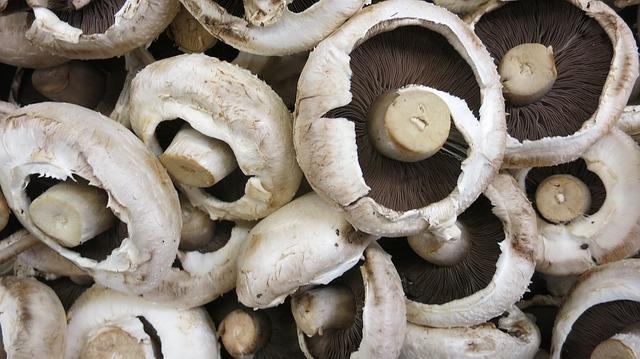|
Listen To The Article
|
The idea of gardening indoors during the winter can be daunting. It’s easy to feel defeated by the low levels of sunlight and the limited amount of space. But some crops are excellent choices to grow inside during the winter, and mushrooms are one. They will happily grow in a plastic bucket, a chunk of log or a seedling flat — and they require minimal space. Plus, the naturally dark and cool winter environment suits them perfectly.
Mushrooms are little health warriors. Carb-free, gluten-free, low in calories and sodium, and nutrient-rich, they are incredibly healthy. Different varieties of mushrooms are packed with nutrients like potassium, selenium, iron, and vitamins B2 (riboflavin) and B3 (niacin). Mushrooms enhance our immune systems and lower hypertension and cholesterol. Their meat-like texture makes them ideal meat substitutes.
There’s no doubt that mushrooms are healthy, but how feasible is it to grow them in our homes? Many of us have heard stories about mushrooms being grown in places like abandoned mines. Plus, mushrooms grow from microscopic spores, instead of seeds. Still, believe it or not, mushrooms are fairly easy — and fun — to grow.
Mushroom Kits
Mushroom spores need to be mixed with a nutrient-rich base like sawdust, grain or straw. This mixture will develop mycelium: thin, soft, white threads (think of mold). Once mycelium develops, it’s called “spawn.” For the best mushroom crop, spawn should be spread on a substrate (base material). Common substrates include cardboard, straw, logs, manure and grain; but other materials like coffee grounds and tea leaves can be used.
Because each variety prefers different substrates and growing conditions, getting a mushroom harvest is a bit of an art. First-time growers should consider using a kit. Kits come complete with spawn, substrate, instructions, and often additional supplies like water misters and plastic sheeting. Growing mushrooms from kits is a breeze, and it offers a terrific chance of success.
Experimenting with Spawn and Substrate
Kits are great because they give you a chance to see what’s involved in the process. But once you’ve tried a kit, it can be more fun to experiment with spawn and substrates. Start by researching different mushroom varieties and the types of substrates and growing conditions each requires. Once you decide on a mushroom variety, look online for spawn suppliers.
Using your own substrates is part of the fun, and it’s a money-saver. Most substrates do need to be pasteurized before use to kill off harmful bacteria and fungi, but the process is fairly simple. Common methods include baths in hot water, hydrogen peroxide or lime, and cold incubation.
Cardboard is an exception. Since most other fungi and bacteria won’t grow on cardboard, it doesn’t need to be pasteurized before use. Simply tear waste cardboard into small pieces and soak in water for at least an hour. Once it’s drained, it’s ready to use.
Cultivating mushroom spores so that you can bypass spawn suppliers is, unfortunately, labor-intensive and costly. It requires a sterile workplace, as well as a pressure cooker or autoclave. However, if you become an avid mushroom producer, you might want to look into cultivating your own spores, too.
A Step-by-Step Guide
- Buy a mushroom kit or spawn.
- If you’re not using a kit, prepare the substrate, and then inoculate it with spawn.
- Place the inoculated substrate in the best possible environment for the variety. Most mushrooms grow best if the temperature is around 55-60 degrees Fahrenheit, but some varieties will perform better in temperatures that are slightly cooler or warmer. Some light is OK, but keep the substrate away from direct sunlight. Basements often work well for growing mushrooms, as does the space under your kitchen sink.
- Keep the inoculated substrate moist by covering it with a damp cloth or a sheet of plastic that has some holes punched in it for air circulation. Remove the covering and spritz with non-chlorinated water two to three times a day.
- Depending on the variety chosen, the quality of the spawn, and the suitability of the growing environment, tiny mushrooms may begin growing within a few days to a few weeks. This process is called “pinning.”
- Once your mushrooms begin pinning, they will mature quickly, usually within a few days.
- The method of harvesting your mushroom depends on the variety you are growing. Some should be cut at the stem; others should be broken off in clumps.
And that’s it! Who knew it could be so easy to grow mushrooms? It really isn’t all that different from growing vegetables, except you are using spawn instead of seeds, and darkness instead of light. Because they prefer cool, dark environments, and require only a little bit of space, mushrooms are the perfect indoor winter crop.
Have you ever grown mushrooms? What advice would you add? Share your tips in the section below:
Bust Inflation With A Low-Cost, High-Production Garden. Read More Here.
